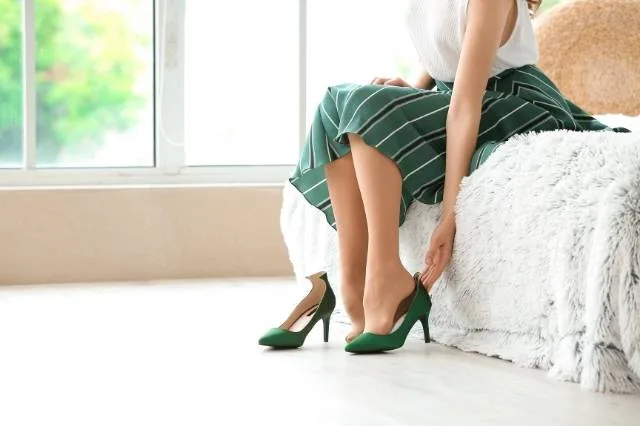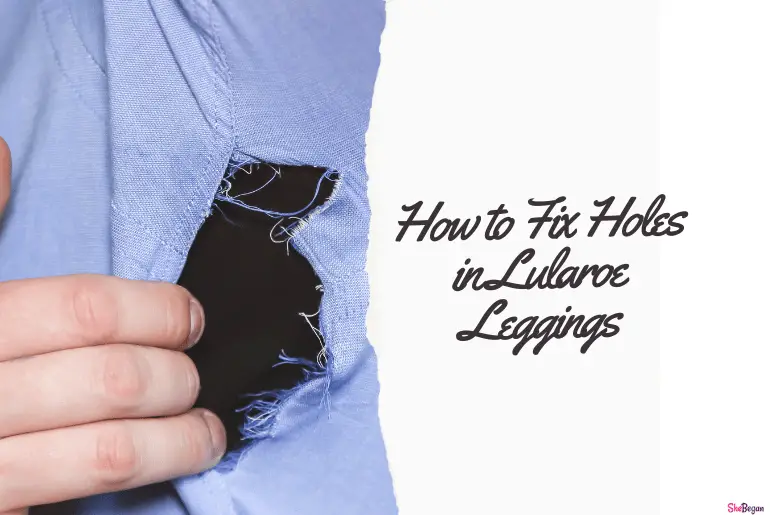One of the problems that women face when it comes to heels is if they fit or not. How exactly do a woman know if their heels fit? I am sure this is one of the questions you have been wondering about. should heels be tight or loose?
No, neither too tight nor too loose is ideal for high heels. The right fit for high heels should secure fit around the foot and heel without causing discomfort. Also, the toes should not be cramped, and there should be enough room in the toe box for them to move freely.
7 Signs Your Heels Are Too Tight

Recognizing the signs that your heels are too tight is crucial for your comfort and foot health. Here are key indicators that your high heels may not fit correctly:
1. Pain and discomfort
The most immediate sign of too-tight heels is pain or discomfort, especially in the toes, sides of the foot, or heel area. If you experience pain shortly after putting the heels on, they’re likely too tight.
2. Marks and indentations
After removing the heels, look for red marks, indentations, or imprints on your feet. These signs indicate that the shoes are constricting certain areas of your feet.
3. Blisters and calluses
Frequent use of tight heels can lead to blisters or calluses, particularly around the toes and heels, where friction is most common.
4. Difficulty walking
Struggling to walk normally or balance properly in your heels can signal that they’re too tight, affecting your natural gait and comfort.
5. Numbness or tingling
Tight shoes can compress nerves in the feet, leading to numbness, tingling, or a sensation of “pins and needles” in your toes.
6. Toenail damage
Too-tight shoes can also cause toenail damage, such as bruising under the nail or ingrown toenails, due to excessive pressure on the toes.
7. Swelling
Tight footwear restricts natural blood flow, leading to swelling in the feet after wearing heels for extended periods.
6 Disadvantages of Wearing Tight Heels

The following are the disadvantages of wearing high heels that are too tight:
1. Foot pain and blisters
Tight heels can cause significant discomfort and lead to the development of blisters and calluses due to constant friction and pressure on the skin.
2. Bunions and hammertoes
Prolonged wearing of tight heels can contribute to the formation of bunions and hammertoes, which are painful deformities of the foot.
3. Poor blood circulation
Tight footwear restricts blood flow to the feet, leading to circulation problems, swelling, and numbness.
4. Posture and gait issues
Wearing tight heels forces the body into an unnatural alignment, affecting posture and gait, which can lead to back, knee, and hip issues over time.
5. Ingrown toenails
The pressure from tight heels can cause toenails to grow into the skin, leading to painful ingrown toenails.
6. Nerve damage
Constant pressure from tight footwear can compress nerves in the feet, leading to conditions like neuromas, characterized by pain, tingling, or numbness.
How to Know if You’re Wearing the Right Size High Heels
To know if you’re wearing the right size high heels, ensure they fit snugly without pinching or causing discomfort. There should be a small space between your longest toe and the shoe’s front, and your heel should not slip out when walking.
Comfortable arch support and a secure fit around the entire foot are crucial. If your feet don’t slide forward and you can walk without pain, you’re likely wearing the right size.
How to Choose the Right Heel Size
Choosing the right heel size involves ensuring a balance between fit, comfort, and style. Consider trying shoes on in the late afternoon when feet are typically at their largest.
Ensure there’s a little gap between the longest toe and the shoe front for movement, and the heels should snugly fit without slipping.
Walk around to check for any discomfort or pinching. Remember, proper arch support and a secure fit around the foot are essential for comfort and to prevent foot issues.
FAQ
Is it better to size up or down in heels?
It’s generally better to size up rather than down in heels. This is because you can always add inserts or pads to improve the fit of slightly larger heels.
Should there be a gap when wearing heels?
Yes, but the gap should not be more than 1cm. A large gap can make heels slip off while walking.
Conclusion
So, do heels need to be tight? No, they don’t. Good heels just need to be snug and not too tight. Wearing tight heels that are small for you can be detrimental to your legs in the long run. It is more advisable to go for your exact size, you can also check before buying online or in shoe shops in order to get your own size.






